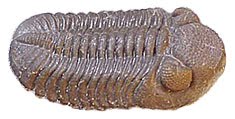Adventures on Earth column for the November 24 edition of The Review
By George E. Beetham Jr.
A program on one of the cable science channels delved into Earth’s interior. In a two-hour program, they gave detailed explanations of what each of the four layers below ground is and how it affects the world in which we live.
Of course, we know best about the surface of the planet. We’ve lived in its embrace for thousands of years, so we have a lot of experience dealing with it and its foibles.
We know about earthquakes, volcanoes, hurricanes, tornadoes, rogue waves, and all the other ways the planet has to either take our lives or make life miserable for a long time.
We even know how the mantle – the region of hot, viscous rock – moves continents around the globe through heat convection.
It is the outer and inner cores that continue to mystify us.
The outer core is thought to be made up of liquid iron, or maybe many molten metals. Convection currents in the outer core may be responsible for variations in mantle temperature.
But it is the spinning of Planet Earth on its axis that agitates the outer core, spinning hotter matter around and keeping the pot stirred.
The inner core is solid iron. We know this because seismic recording devices bounce off the inner core when earthquakes occur. Around the world these readings show the inner core and its relative size.
While the inner core is hot, it is cooler than the outer core. It is now thought that the inner core is slowly expanding as the planet cools. In time, the entire planet will cool to a point where it will consist of solid material from surface to center.
That date is many millions, likely billions of years ahead of us. In the meantime a more pressing matter needs attention.
The Earth is protected from solar radiation by its magnetic field. As solar flares shoot radiation far from the sun as solar wind, the solar wind is deflected around Earth by the magnetic field.
The magnetic field is generated by the inner core, which sends out electrical pulses that create the field. Once thought to act like a dynamo, the electrical charge is what generates the field.
At both poles, the interaction between solar wind and magnetic field can be seen as aurora – the shimmering northern and southern lights.
When a large mass of solar radiation is released and shot outward, the aurora can be seen many miles away from the poles, even over eastern North America.
Over time, for reasons we don’t yet understand, the polarity of Earth’s magnetic field flips. What is now the north pole becomes the south pole and vice versa.
We know about polarity flips because the magnetic orientation is recorded in molten magma that cools and becomes solid. As the rock solidifies, the magnetic orientation is locked up as iron molecules orient themselves along the magnetic plane.
Earth is very likely in the early stages of just such a flip right now. First, the magnetic field is slowly weakening. East of Brazil in the Atlantic Ocean, the magnetic field has disappeared altogether.
Moreover, by studying the time between polarity flips, it appears we are about due for one to occur.
No human has lived through a polarity flip. The last one took place an estimated 700,000 years ago. So we don’t know exactly what will happen as the process plays itself out.
We do know that solar radiation would likely increase as the magnetic field weakens and stops. But we don’t know what that means for life, particularly human life.
But the Earth has gone through polarity shifts many times, and life has continued right on through the shifts.
We don’t know when the shift will happen and we don’t know how long it will take for the process to play out. There are these events that science cannot yet describe.

No comments:
Post a Comment